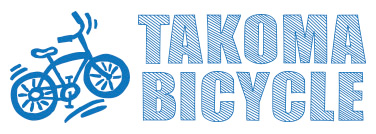
Road awareness is a must
Simply put, adhering to the do's and don'ts of cycling road safety can be the difference between life and death - or serious injury. Road cycling can be intimidating and scary, but following a few simple guidelines can greatly decrease your risk. Even seasoned cyclists need a reminder every now and then of what to do, and what not to do. Read on for our top tips for cycling road safety.
Don't leave home without a helmet
And not just any helmet. You need a well fitting helmet, that has been purchased no more than 10 years ago. On the safe side, helmets should be replaced every five years, or if the helmet has been in a crash. Foam can deteriorate over time in a helmet, so even if it hasn't had a lot of use it is wise to replace regularly. Your helmet protects the most important part of your body - don't skimp on it! Investing in the latest technology can make a great difference in the case of a collision.
Ride the right sized bike
Riding a bike that either is too small or too big hampers your ability to handle and control the bicycle. Bike fits are important not just for your ergonomic comfort, but also for your safety. Talk to us about getting the correct fit on your bike.
Do a check-up before you ride
You should inspect your bike each time before you ride. Check for any loose nuts or bolts on the handlebar, stem and seat post. While pressing on the front brakes, move the bike back and forth to ensure the headset it tightened. Check your bike tire pressure and pump it to the recommended PSI. Check the brake pads and adjust as needed.
Be visible
Day or night, you should always ride with a bike light. A headlight allows you both to see at night, and be seen during the day. During the daytime, consider setting your headlight to flashing mode for greater visibility. Taillights are also important day and night, and are most effective in an irregular flashing pattern. With both, always make sure they are fully charged before a ride. Also in the name of being seen, always wear high visibility clothing. If you don't want to invest in a full set of high visibility clothing, you can just add a vest to what you already own. Hi-vis Velcro strapped around your ankles also can help a great deal with visibility.
Be aware
It's important when cycling on the road to always remain aware and alert to your surroundings. Devices like the Garmin Varia can detect oncoming vehicles as far away as 140 meters to help increase your awareness. Music can be a great motivator; however, when riding on the road it's best to leave headphones at home. You want your full senses available to you. In addition, you do not want to be fumbling around with your phone while riding. A phone mount can allow you to view your route or other metrics without the use of your hands.
Be predictable
Predictability is a must when sharing the road with others. This means riding in a straight line, not swerving or braking unnecessarily, and signaling with your hands when needed. It's important to asses the road ahead for hazards or potholes, so you can slowly and gradually adjust to avoid them instead of a sudden swerve.
Choose an appropriate speed
Always choose a speed that you're comfortable and confident maintaining, and that is appropriate for the road you're on. Consider the weather, the road surface, and the traffic when choosing a speed - not just your fitness.
Act like a vehicle
When you're riding on the road, you're considered to be a vehicle like the cars and trucks around you. This means you need to act like a vehicle. You need to obey all traffic laws, stop at lights, and use lights when required. It can be tempting, especially on an empty road, to ride on ahead at a red light. However, act like a vehicle. Stop. And don't jump the light. When you're driving a car it is important to be aware of others' blind spots. The same is equally, or more so, true on a bike. Be careful not to ride in a vehicle's blind spot. If you can't see a vehicle's side mirror, they can't see you.
Give berth to parked cars
Always give a wide enough berth for a door to open from a parked car. A person in the car may not be aware of your approach, which could end very poorly for you. If possible, try to ride 2-3 feet away from parked cars. If that much space isn't possible, carefully observe if there is a person in a parked car that could unsuspectingly end your ride for the day.


